Faulty Furnace Thermostat Symptoms
In order to keep your house warm and comfortable throughout the winter, the ability to properly regulate your furnace is imperative. Homeowners are able to do so with their thermostats. You can think of your thermostat as a control hub that allows you to program your desired temperature and indoor comfort levels during the day. So, how can you tell your thermostat isn't working? And what can you do to fix it? To learn more about faulty furnace thermostat symptoms, keep reading.
What is a furnace thermostat?
A thermostat is a device that controls how your furnace operates, changing the indoor temperature of your home at the click of a button. It functions as an interface between you and your heating system by allowing you to program and adjust the desired indoor temperature of your home, regardless of what the weather is like outdoors. Essentially, the heating process is started and stopped by the thermostat and furnace working together to reach the temperature that you want.
Ultimately, a furnace thermostat is critical to your home's comfort levels and monthly energy costs, which is why you'll want it to operate correctly at all times.
How can I tell if my oven thermostat is not working?
Thermostat problems can cause uneven heating in your home, not to mention frustration. These are typical warning signs that your thermostat isn't functioning correctly. Remember, prompt repairs are crucial to preventing further damage to your thermostat and your heating system as a whole. So, take note of these five thermostat failure signs and call the team at Mr. Furnace Heating and Air Conditioning if you ever spot one in your home:
· Inaccurate temperature of thermostat readings: There can be an issue if the temperature that the thermostat is displaying is different from the real temperature in your home.
· Furnace running constantly: Your heating system may run constantly if your thermostat does not tell the furnace to turn off despite the fact that it reaches the appropriate temperature. This is called short cycling, and it can lead to discomfort, energy waste, and furnace damage.
· Disabled controls: An inner-system issue may be the cause if the knobs, buttons, or touchpad on your thermostat are not functioning properly.
· Lack of warmth or insufficient heating: If your house remains cold even after you raise the thermostat or if the heating is inadequate, the thermostat may not be correctly communicating with the furnace.
· Defective wiring: Inspect the thermostat wiring for deterioration, broken connections, and other abnormalities. The thermostat and furnace may not be able to communicate because of damaged or insufficient wiring.
· Age and wear: Over time, thermostats may corrode or lose their accuracy. If your thermostat is elderly and has been in use for a long period, it may be more susceptible to issues.
When should I change my furnace thermostat?
When determining whether or not you require a new thermostat, an assortment of factors must be taken into account. Here's how to determine if an update is warranted:
· Limited or nonexistent customizable features: Contemporary thermostats typically include programmable functions that allow you to set different temperatures throughout the day and night. If your current thermostat isn't programmable, upgrading to a smart thermostat can increase comfort and energy savings.
· Frequent adjustments: If you find yourself tweaking temperature settings on the thermostat frequently to maintain an appropriate temperature, it may indicate an operational issue. A new thermostat with accurate temperature regulation can solve this.
· Energy-saving objectives: Installing a programmable or smart thermostat can help you cut down on both your energy consumption and electricity expenses. These thermostats allow you to remotely establish programs and adjust thermostat settings themselves, and they incorporate occupancy detection for increased efficiency. Consider upgrading if you're looking to improve energy-efficiency scores.
· Installation of a new furnace: To guarantee the best performance and energy savings, you might wish to replace your home's thermostat at the same time as the furnace.
How do I check my furnace thermostat?
A furnace thermostat can be tested in a few easy steps to make sure it is working correctly and able to communicate with your furnace. Here is a closer look below:
1. Examine the power supply: To look for wiring issues, switch the electrical circuit breaker to cut off power. After removing the thermostat cover, inspect the wiring. Make sure that each wire is securely fastened to the corresponding circuit. The battery, which is also located beneath the cover, could also need replacing.
2. Set your thermostat to heating: Adjust the temperature to a level higher than the surrounding air temperature. By doing this, the heating system will turn on and should begin to function normally.
3. Check the display on the thermostat: Examine the display on the thermostat. If the screen on mechanical thermostat is blank or shows the incorrect temperature, there is definitely an issue with the thermostat.
4. Verify the circulation of air: Put your hand in front of a vent to see whether any warm air is escaping from it. If the warm air disappears after a few seconds, there is a problem with your thermostat and furnace.
If you experience difficulty conducting any of these tasks, or if issues arise during the testing process, it's suggested that you consult with a skilled HVAC technician for further assessment and repairs. A thermostat inspection is a brief examination that can miss specific potential issues. A comprehensive review by a qualified technician could be necessary for a more accurate diagnosis.
Get Malfunctioning Thermostat Repair or Maintenance
Mr. Furnace, Heating and Air Conditioning is available for repairs and maintenance 24/7/365 days a year, including after-hours, weekends, and holidays at no extra cost. We also offer same-day repairs in case of an emergency.
If you live in Beamsville, Fort Erie, Lincoln, Port Colborne, St. Catharines, Vineland, Winona, Cayuga, Grimsby, Niagara-on-the-lake, Niagara Falls, Pelham, Smithville, Thorold, or Welland, don’t hesitate to reach out and schedule your thermostat replacement or repair appointment with a certified HVAC technician today!
Contact Mr. Furnace over the phone or use our online booking form. We look forward to partnering with you.





